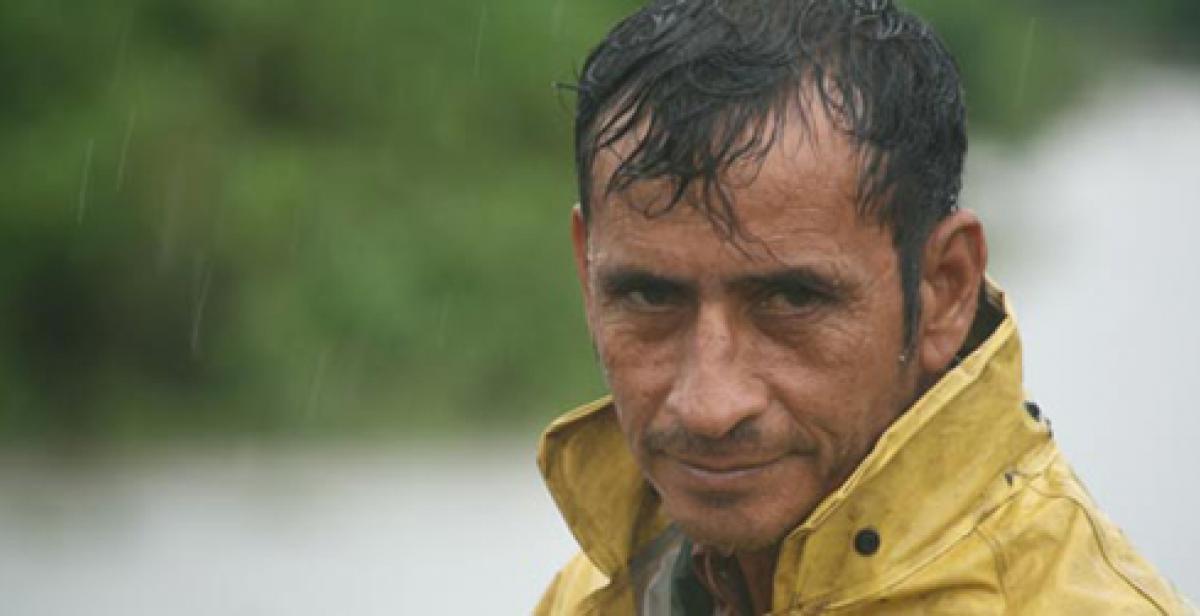We have been deeply concerned to hear of the impact of heavy rains and flooding across Central America, especially Progressio’s programme areas of El Salvador, Nicaragua and Honduras.
In El Salvador, 20,000 people are reported as displaced due to the situation. Xiomara Ventura, Progressio’s Regional Representative in Central America, writes, “Honduras is on red alert in the south and west. There are forty people dead, about thirty-five thousand affected families, productive land damaged and infrastructure flooded.” Communities that Progressio works with are directly affected.
All Progressio staff and volunteers are safe.
Maggie van Vogt, a Progressio development worker in El Salvador, has sent a report on the situation, copied below. She reports on the concerns that once the floods recede, crops will have been wrecked, making life much harder in the months ahead. She also says that Progressio partners are linking the increase of extreme weather like this as an indication of a changing climate.
If you would like to donate to Progressio’s work in El Salvador and Nicaragua and Honduras, this will help us to continue our vital work alongside the communities affected as they recover from the flooding and for the long term. We are working to help build more resilient communities, and more sustainable environmental management, helping communities to cope better with emergencies such as this.
To donate click here. For more information, please contact Progressio’s London office.
Read a transcript of Maggie's recent interview with the BBC in our 'From the ground' blog
Maggie von Vogt, a Progressio development worker, reports from San Salvador, El Salvador on the tropical storm wreaking havoc across Central America.
Sunday October 16 2011
The heavy rains that have fallen all over the Central American region for the past week are creating disaster and destruction, yesterday resulting in the Guatemalan and Salvadoran presidents' declaration of a state of calamity for both countries.
In El Salvador, evacuations continue throughout all parts of the country but the coastal and mountainous zones remain the hardest hit. At the time of writing this article, 32 people have died as a result of the rains and more than 20,000 are in shelters (www.elsalvador.com).
The rains, which began in El Salvador the night of Monday, October 11th, are from the Tropical Storm 12E, which hovers over the region and manifests in waves of heavy rains, slowing down occasionally to drizzle, and returning again to downpours.
According to the United Nations, 50,000 Central American people are directly impacted by the storm in the Central American region. Coordination between government rescue, local organizations, and citizens has been positively evaluated by relief organizations and non governmental organizations, but this phenomenon has caused more damage than the human and financial resources can meet.
The state television channel is dedicated full time to giving ongoing reports on every part of the country, through which citizens and public officials share information from their communities about emergency situations, floods, evacuations, food prices, conditions in shelters, mudslides, blocked highways, infrastructural damage, and more, via social networks such as facebook and twitter and telephone.
In an address to the country by President Maurico Funes on Saturday night, he urged Salvadorans living in dangerous zones to leave their houses and move to safe locations, prioritizing their lives over their belongings. He also called on Salvadorans to leave political party affiliations behind in their relief work, and to act based on brotherhood and solidarity. In his Sunday address, he assured fast and coordinated actions between state institutions to insure that communities in risk are evacuated and that people in shelters receive much needed food, clothing, and health care.
Carolina Amaya, of the Mesoamerican Climate Justice Campaign and envrironmentalist organization Unidad Ecológica Salvadoreña emphasized the intense impact that the storm will have on the livelihoods of Central Americans for much more time after the rains pass. "Some people in the communities are saying that more rain has fallen now that when Hurricane Mitch hit in 1998. But what we are seeing as another concern is the loss of corn, bean, and vegetable crops, which will have a devastating and long standing impact food security across the region for months to come," she commented, while visiting agricultural communities in the western department of Sonsonate.
Although Central America is currently in its rainy season, the sustained and intense rainfalls of tropical storm 12E are much more than what usually occurs during the rainy season, and is yet another result of what people add to the list of impacts of climate change in the region.
Read about what the people of Central America mean when they demand climate justice
To read about solidarity work in English, go to:
http://voiceselsalvador.wordpress.com/
http://www.cis-elsalvador.org/index.php
Show your solidarity: take action on climate change by writing to the UK government demanding strong targets for emissions cuts.
Photo: A resident of San Francisco Menéndez, Ahuachapán, El Salvador, one of the zones most affected by the storm. This photo was taken last week. Currently this zone is cut off from the rest of the country due to bridges collapsing and flooding. (Photo © Marcos Cerra/Progressio)
The photo was taken by Marcos Cerra, a former Progressio development worker. Read more about the vulnerability of San Francisco Menendez to storms and flooding and Marcos Cerra's work to help people adapt to the consequences of a changing climate
Read our most recent briefing about Catholic perspectives on climate change here.



